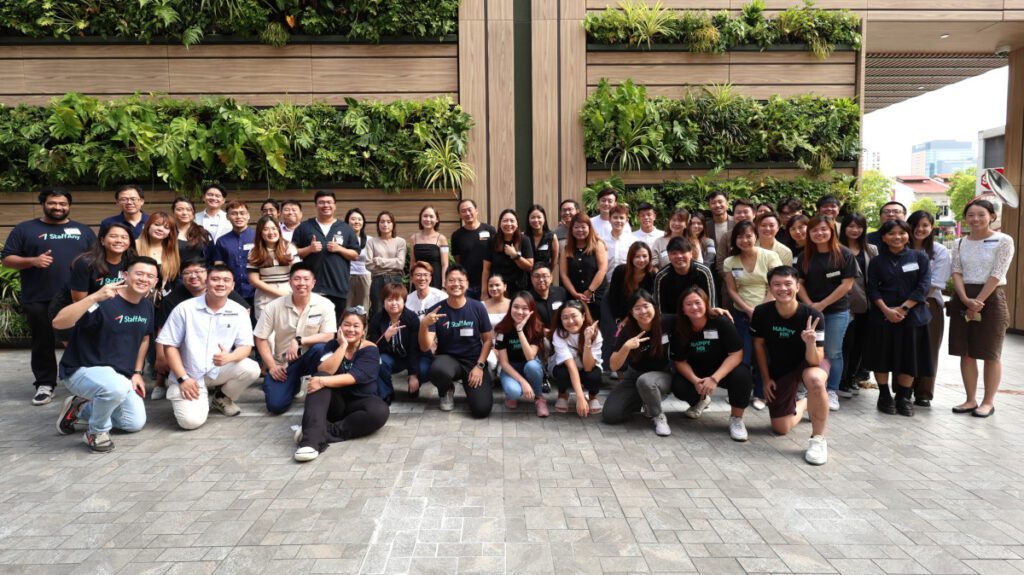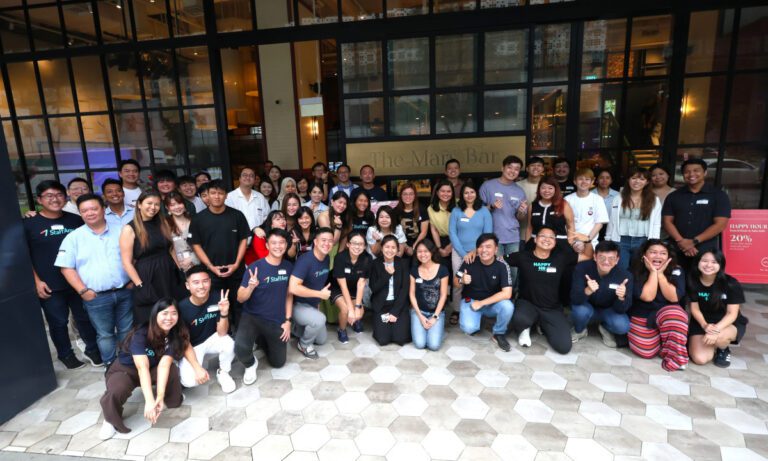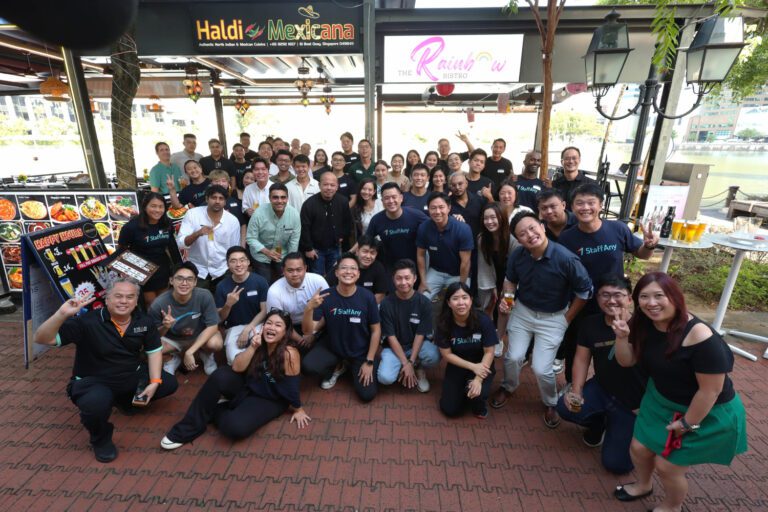13th August 2025, Yanhuo Restaurant:
The 17th edition of StaffAny’s HR Happy Hour welcomed HR professionals from brands across Singapore’s F&B and retail scene. Over drinks and conversation at Yanhuo Restaurant, this month’s session focused on a topic many HR teams struggle with: salary benchmarking.
This session featured two guest speakers: Adrian Lim, Head of HR at Golden Beeworks Pte Ltd (Jollibee Singapore) and Roy Leow, HR Director of Shake Shack joined the fireside chat to unpack how HR leaders can make sense of compensation strategy.
Building Your Benchmarking Framework and Why It Matters
Angie and Jacob shared that the leadership pipeline starts with its structured Management Trainee (MT) program, designed to fast-track high-potential individuals into restaurant management roles.
Unlike other MT programmes, they mentioned that a customised, outlet-specific training approach is used. Trainees are not rotated randomly across brands. Instead, each concept has its own specialised track whether sushi, bakery, yakiniku, etc. and trainees train to become masters of their selected domain.
The training is holistic, spanning operations, branding, leadership, and even conflict resolution. Participants go through probation, structured coursework, and a rigorous “shift verification” process to assess their readiness for real-world restaurant leadership. Special emphasis is placed on crisis management and safety, two areas that are often neglected in traditional management tracks.
Use Public Portals with Caution
Free resources like JobStreet, MyCareerFuture, and FastJobs can provide useful salary ranges, but their data may vary widely. It is essential to cross-check multiple sources and compare only with businesses that are similar in size, scale, and business model. Comparing around 8 relevant competitors should be sufficient.

Don’t Forget the Benefits
Beyond base salary, allowances like transport and meal claims also matter. For example, staff working at airport outlets often receive location-based top-ups.
Ultimately, your compensation strategy should reflect your positioning as a brand: are you a premium employer, mid-market, or cost-focused? For example, some restaurants choose to add 20% to the median salary if they choose to be a premium employer.
Culture That Scales
Most companies use a ±20% range in salary bands, but this can vary depending on how much variation a company is willing to tolerate between employees in similar roles. The narrower the band, the more consistent the pay perception.
Ending with A Community-Led Benchmarking Study
To wrap up the session, attendees were invited to join a community-led salary benchmarking study tailored for Singapore’s F&B HR leaders. Participants will contribute anonymised data based on business type, with insights shared at a roundtable on 17th September 2025 and the next HR Happy Hour in October.
Brands that participate will benefit from:
- Normalised insights from peers across QSR and dining segments
- A custom report to support internal HR reviews
- More confidence when adjusting salary bands or communicating with leadership
This session ended with a reminder that data-backed conversations only happen when everyone shows up and contributes. By coming together as a community, Singapore’s F&B HR leaders can make more confident, informed decisions on compensation, hiring, and staff development.
With that, attendees mingled over drinks and dinner, exchanged contacts, and took part in a lively photo session. HR Happy Hour once again proved itself to be a space for collaboration, support, and community-led change.
See you at the next HR Happy Hour!










